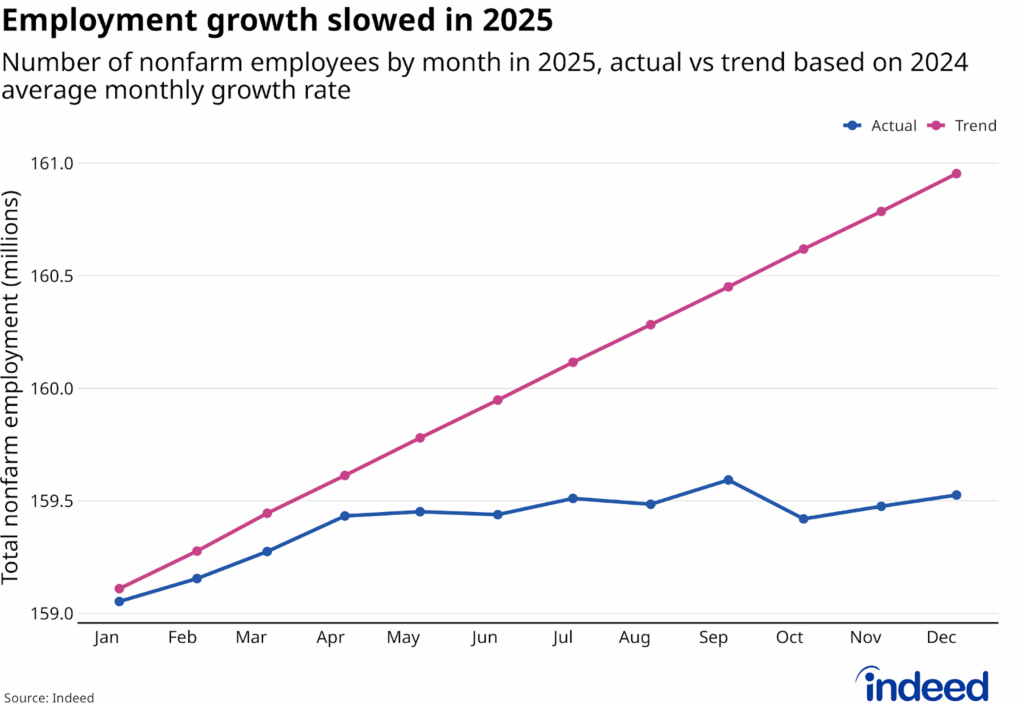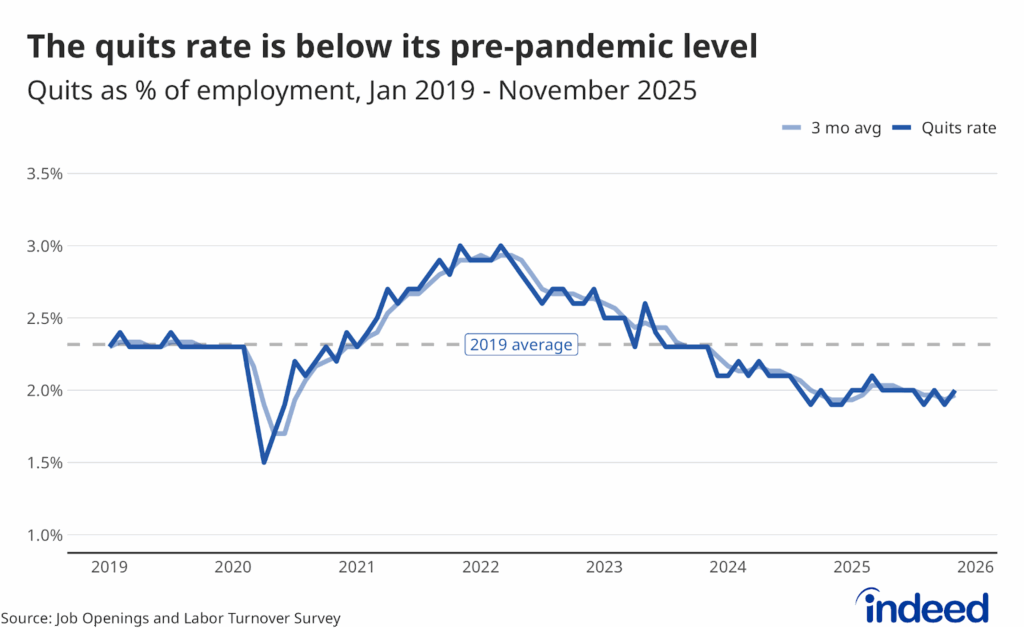Key Points
- Job seekers are substantially less interested in lower-wage, in-person sectors like loading & stocking and personal care & home health than they were before the pandemic.
- Median advertised hourly wages are strongly correlated with rising job seeker interest, even more than a sector’s share of remote work.
- For employers in low-wage, in-person sectors, raising wages may be the only significant way to attract more applicants.
Employer demand for labor continues to rise as we slowly emerge from the pandemic. But there’s yet to be a flood of job seekers to fill open positions and many employers are left scratching their heads. In the short term, employers are trying to sweeten deals, with the share of job postings advertising hiring incentives doubling since last year.
To find out what jobs workers are looking at, the Indeed Hiring Lab has developed the Relative Job Seeker Interest metric. Our new measure captures changes in job seeker interest in an occupational sector since the beginning of the pandemic compared with the average job. Our pre-pandemic baseline is February 1, 2020. A positive change in this metric since then means, compared with the average posting, the sector has become more attractive to job seekers than before the pandemic.
As of October 8, 2021, relative job seeker interest in civil engineering job postings was up 59.1%, the biggest gain of any occupational sector. Relative interest in IT operations & help desk jobs was close behind, rising 59% from its pre-pandemic baseline.
In some occupational sectors, like medical technician, relative job seeker interest was similar to pre-pandemic. But that doesn’t mean interest has been consistently flat. As of July 16, job seeker interest in medical technician jobs was up 20.6% from its baseline. But, in the twelve weeks after that, interest declined to less than 1% above the baseline.
Other sectors, like loading & stocking, are substantially less interesting to job seekers now than pre-pandemic. That’s bad news for hiring in those sectors, where job postings have been rising for months. And for sectors like personal care & home health and childcare, dampened interest only aggravates existing hiring challenges. As of October 8, 9.8% of personal care & home health job postings and 4.8% of childcare jobs were hiring urgently, well above the national average of 2.6% of job postings.
Advertised wages most powerful factor behind shifts in relative interest
For employers struggling to hire, offering applicants better pay and flexibility in location are two tools that potentially can jump start job seeker interest. The median hourly wage advertised in a job posting and whether the job can be performed remotely are positively and significantly related to changes in relative job seeker interest. In other words, job seekers are looking more often at positions that advertise higher wages or are more likely to be doable remotely.
This creates hiring difficulties in a variety of lower-wage and in-person sectors. Food preparation & service and childcare are two service sectors in which most jobs generally don’t pay well and simply can’t be done remotely. Goods-related sectors like production & manufacturing and loading & stocking also fit the description and, on top of that, are hamstrung by supply chain snarls.
What options do employers have to alleviate hiring challenges? Wages are strongly associated with shifts in job seeker interest toward a sector. To a lesser extent, the likelihood of remote work also attracts greater job seeker interest.
That leaves many employers in a bind, especially those in low-wage, in-person sectors. They’re feeling a hiring crunch now and solutions are scant. Shifting work to remote is rarely possible. In fact, only 37% of jobs nationally can be done remotely. These employers have only one major lever: raising wages. Many employers are doing this. For example, wages in leisure and hospitality have been rising as employers struggle to staff up. Unfortunately, not all employers can afford to raise wages high enough to attract the workers they need. For them, hiring will continue to be a headache.
Methodology
The Relative Job Seeker Interest metric takes the average number of clicks per job posting for each job category relative to February 1, 2020, divided by national clicks per posting relative to the same time period. Both clicks and job postings are 28-day moving averages of seasonally adjusted data.
A positive change means the average job posting in a category is now more attractive to job seekers relative to the average posting than it was before the pandemic. A negative change indicates that the category has lost interest relative to the average posting since February 1, 2020. By construction, the national average across all sectors is zero.
The median hourly wage and remote share of job postings is calculated by category for calendar year 2019. The logs of median wage and remote share are then regressed on the change in relative job seeker interest with standardized coefficients and weighted by the raw sectoral job postings count for 2019. Both independent variables are statistically significant at the 1% level, with a joint adjusted R squared value of 0.45. Weighting by the raw sector job postings count for 2019, the log of both variables are positively and significantly correlated with changes in job seeker interest.






